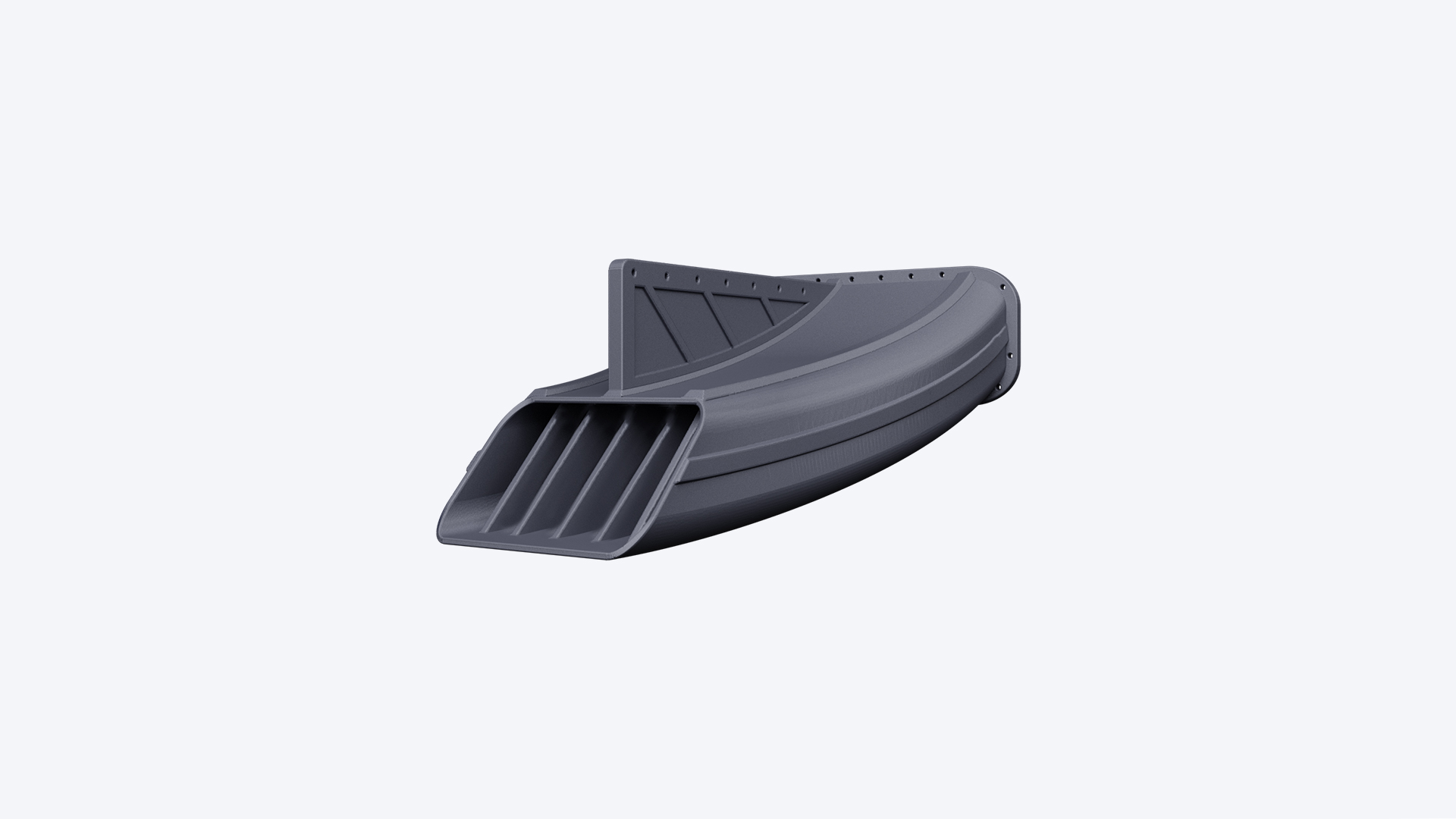
Intake Duct for Helicopters with Carbon PEEK and the Roboze ARGO 500 3D Printer
In the world of aerospace, innovation is a buzzword. The challenges of designing and manufacturing components that meet the highest standards in terms of safety, efficiency and performance constantly require new technologies and materials. One of the most recent revolutions in this sector is the use of the Roboze ARGO 500 3D printer for the production of critical components, such as the external air intake duct for helicopters, using the Carbon PEEK material. This approach has revolutionized the way aerospace components are designed and manufactured, offering a number of significant advantages.
Limits of traditional techniques
Traditionally, the production of aerospace components such as the external air intake duct for helicopters involved laborious and expensive processes. These components were often made using soluble molds, requiring complex fiberglass lamination operations, and sometimes involving the use of heavy composite materials. These traditional methods were effective, but had a number of limitations:
1. Process Complexity: Traditional techniques often involve the creation of soluble molds, which require considerable time and resources to make. These soluble molds are essential for producing complex, detailed parts, but require significant fabrication time, increasing costs and delaying the manufacturing process. Imagine an intricately shaped intake duct with a series of complex geometries. Building a soluble mold for such a structure would take many hours or even days to complete, significantly delaying the production cycle.
2. Design Limitations: Hand lay-up of fiberglass is often used to strengthen components. This process requires manual laying layers of fiberglass, which brings limitations in the complexity of the shapes that can be made. If you want to design an intake duct with irregular shapes or intricate structures to improve aerodynamic efficiency, hand lay-up becomes an obstacle, limiting the creativity of designers.
The adoption of the Roboze ARGO 500 3D printer in combination with Carbon PEEK material addresses and overcomes these limitations, offering greater efficiency, cost reduction and greater design freedom in the aerospace industry.
Roboze ARGO 500: transformation of the production of intake ducts for helicopters
The introduction of the Roboze ARGO 500 3D printer flips the rules of the game. This powerful 3D printer is capable of manufacturing aerospace components with unprecedented precision, overcoming the limitations of traditional techniques. The helicopter intake duct is just one of the many examples of how this technology has revolutionized the sector.
Main advantages:
• Flying Parts Qualification: The Roboze ARGO 500 3D printer offers a precise and repeatable ecosystem, ensuring each part meets rigorous safety and reliability standards. For example, helicopter intake duct, produced with this technology, can be made consistently and accurately, minimizing the risk of defects or errors. This is crucial in the aerospace industry, where safety is a priority, and every component must pass stringent qualification tests.
• Design Freedom: 3D printing opens up new design possibilities that were not feasible with traditional techniques. A tangible example is the ability to create intake ducts for helicopters with complex and geometric shapes that optimize aerodynamic efficiency. With the Roboze ARGO 500, designers can fully exploit design freedom, leading to innovative solutions that improve the overall performance of aircraft.
• Lightness of the parts: The use of Carbon PEEK material offers an unprecedented combination of lightness and resistance. This advanced material allows the weight of the components to be reduced, improving the performance of the helicopter. For example, the intake duct made of Carbon PEEK is significantly lighter than its counterparts made of traditional composite materials, reducing fuel consumption and increasing the agility and operational efficiency of the helicopter.
• Time and cost saving: With traditional techniques, hand lay-up of the fiberglass was a labor-intensive and time-consuming process. The Roboze ARGO 500 3D printer eliminates this complexity, simplifying production. With the 3D printer, these components can be created much more efficiently, saving time and money without compromising quality.
Carbon PEEK: the most adopted 3D printing composite material in the aerospace industry
Carbon PEEK material is a lightweight, self-extinguishing composite and can operate in a wide range of temperatures and operating conditions. Its mechanical resistance makes it ideal for critical applications, such as the intake duct for helicopters. The combination of PEEK with carbon fibers gives the material exceptional strength and structural rigidity, making it perfect for the needs of the aerospace industry.
The production of 3D printed air intake duct with Carbon PEEK and the Roboze ARGO 500 3D printer represents a turning point in the aerospace industry. This technology offers unprecedented efficiency and flexibility in the production of critical components, overcoming the limitations of traditional techniques. With benefits such as flying part qualification, design freedom, lightweight parts, and the elimination of carbon fiber hand lay-up, this innovation promises to transform the aerospace industry and pave the way for new design and manufacturing possibilities.
